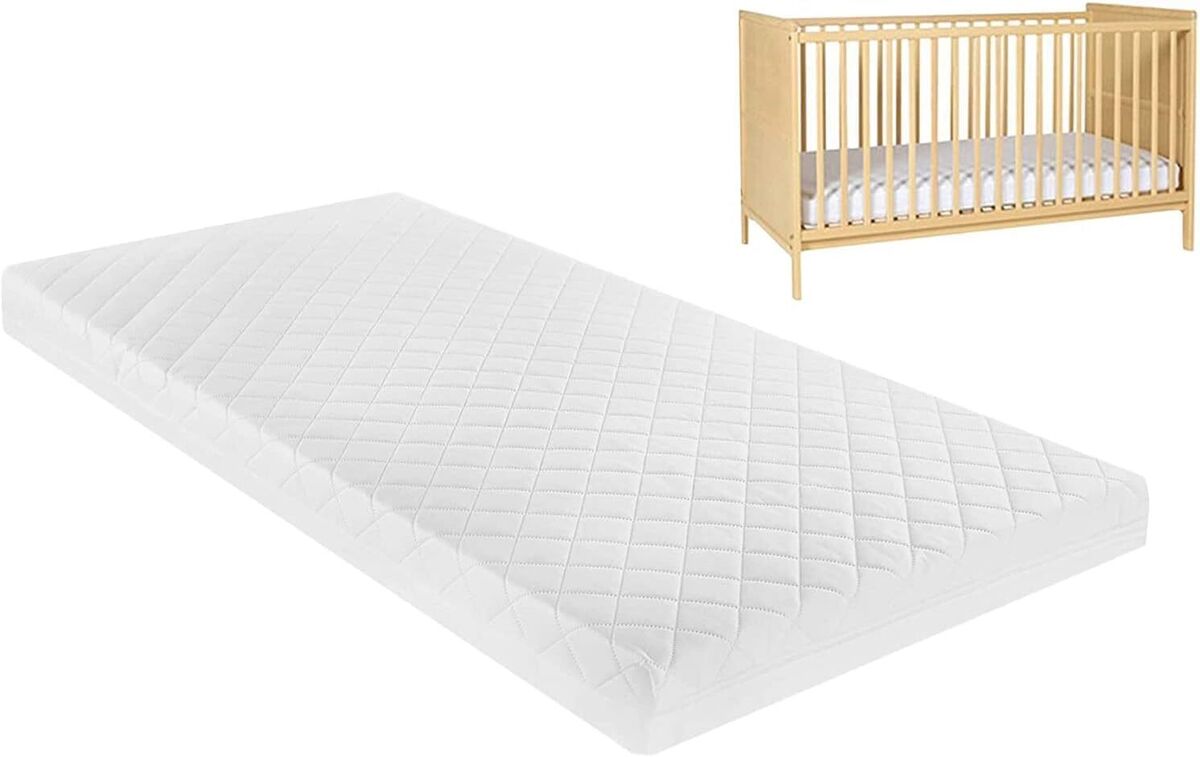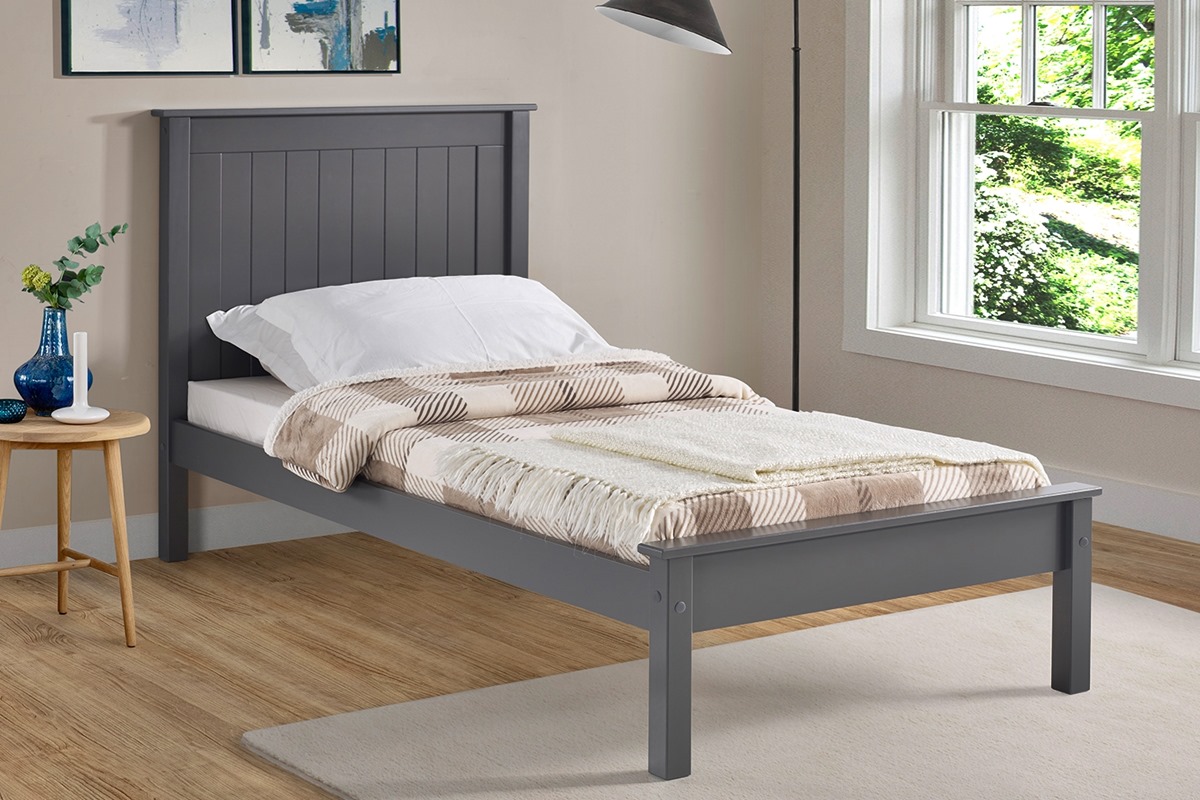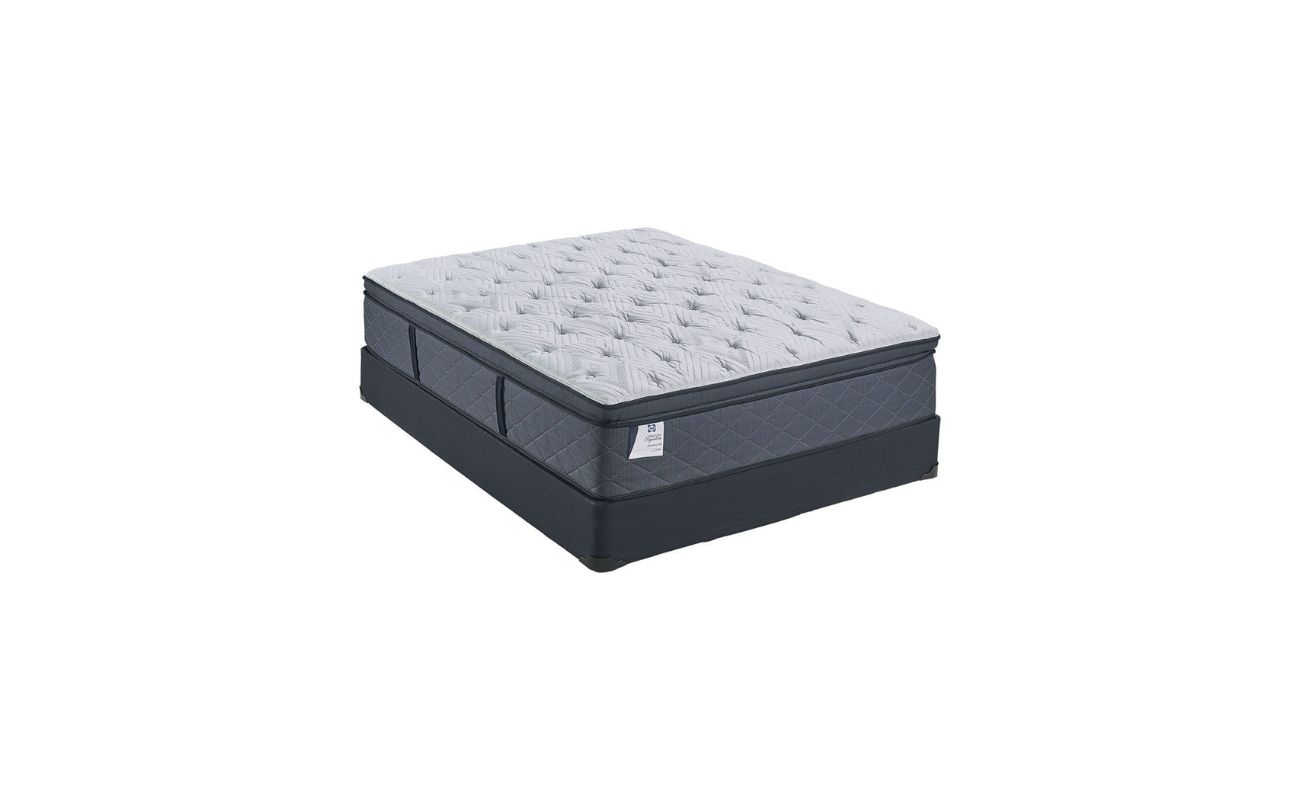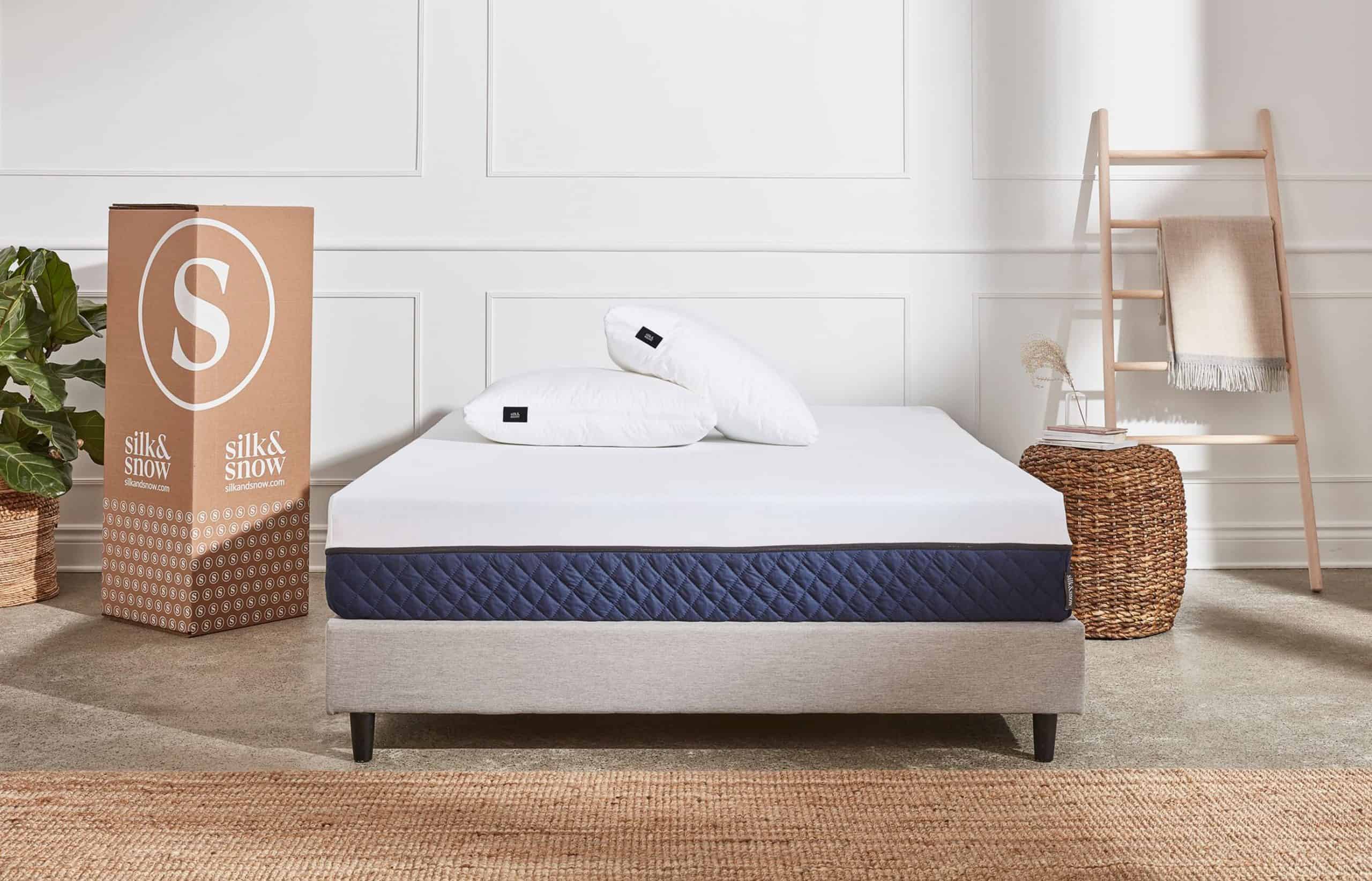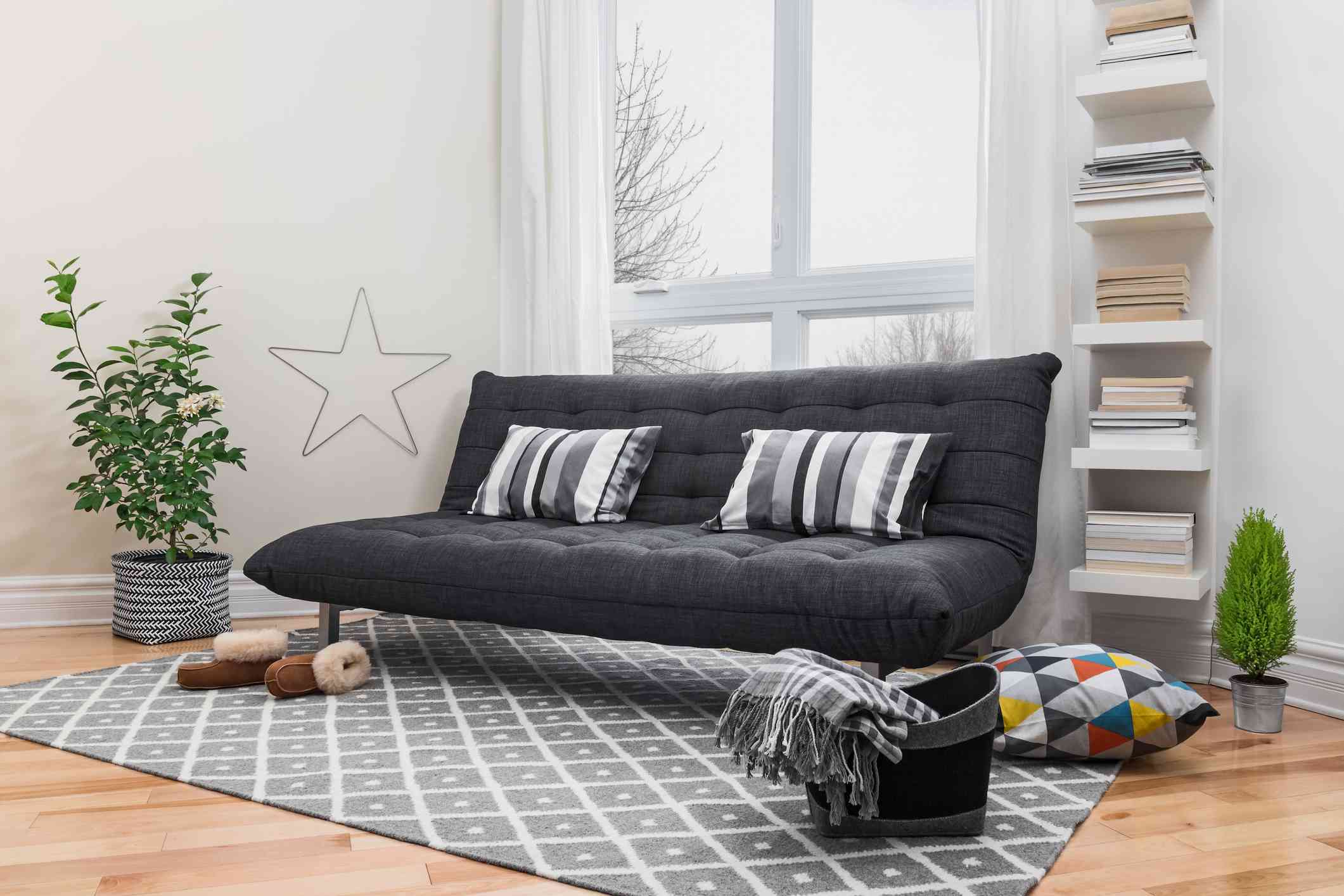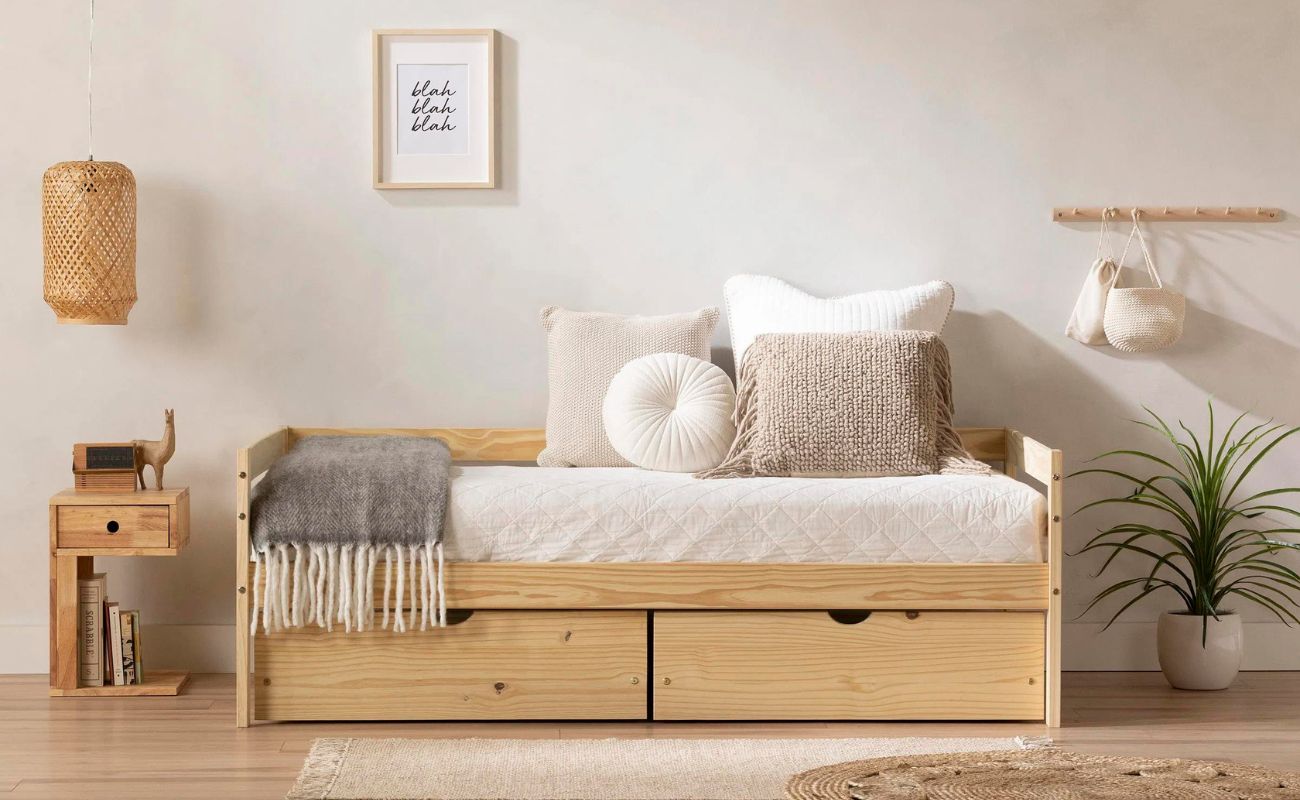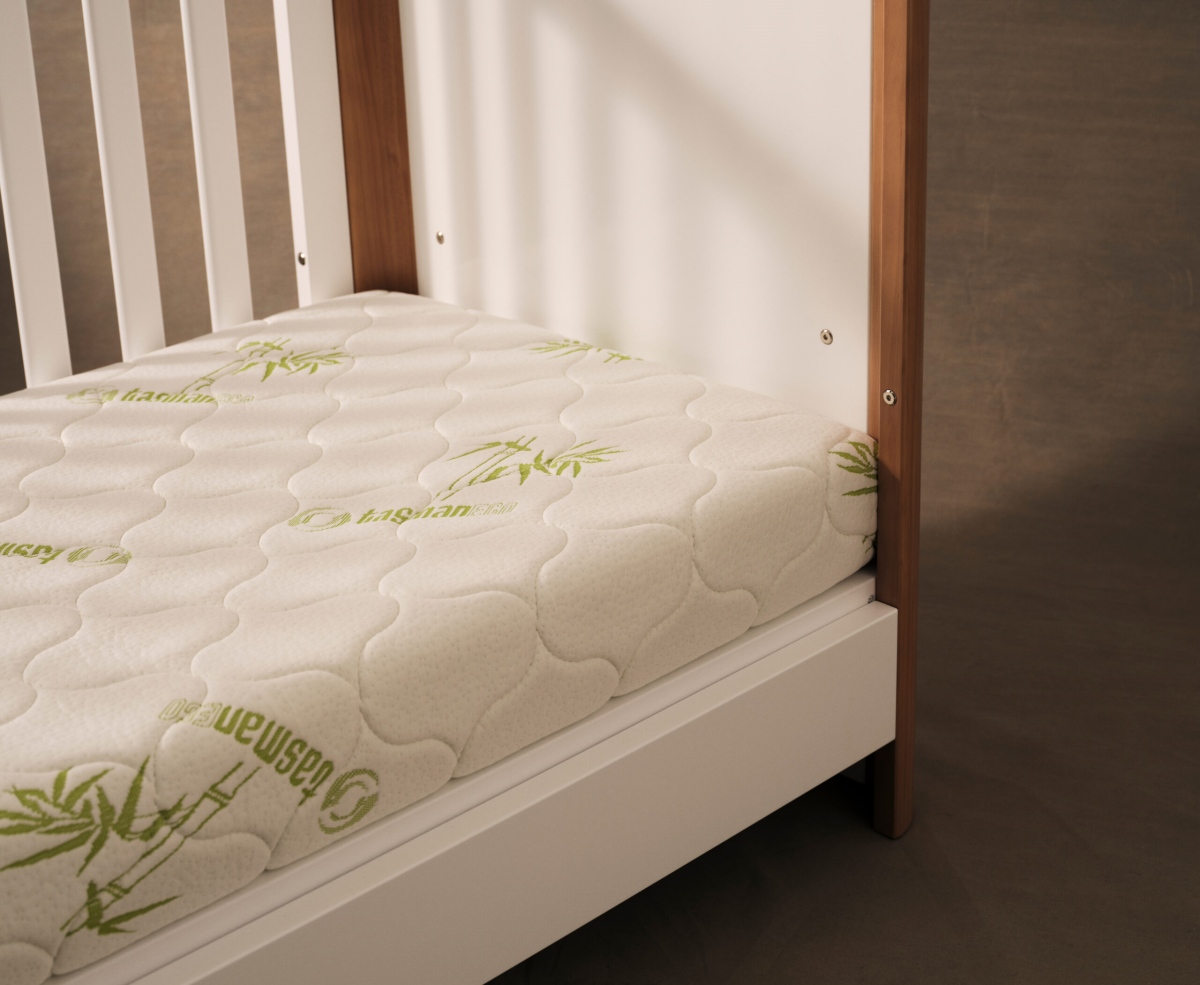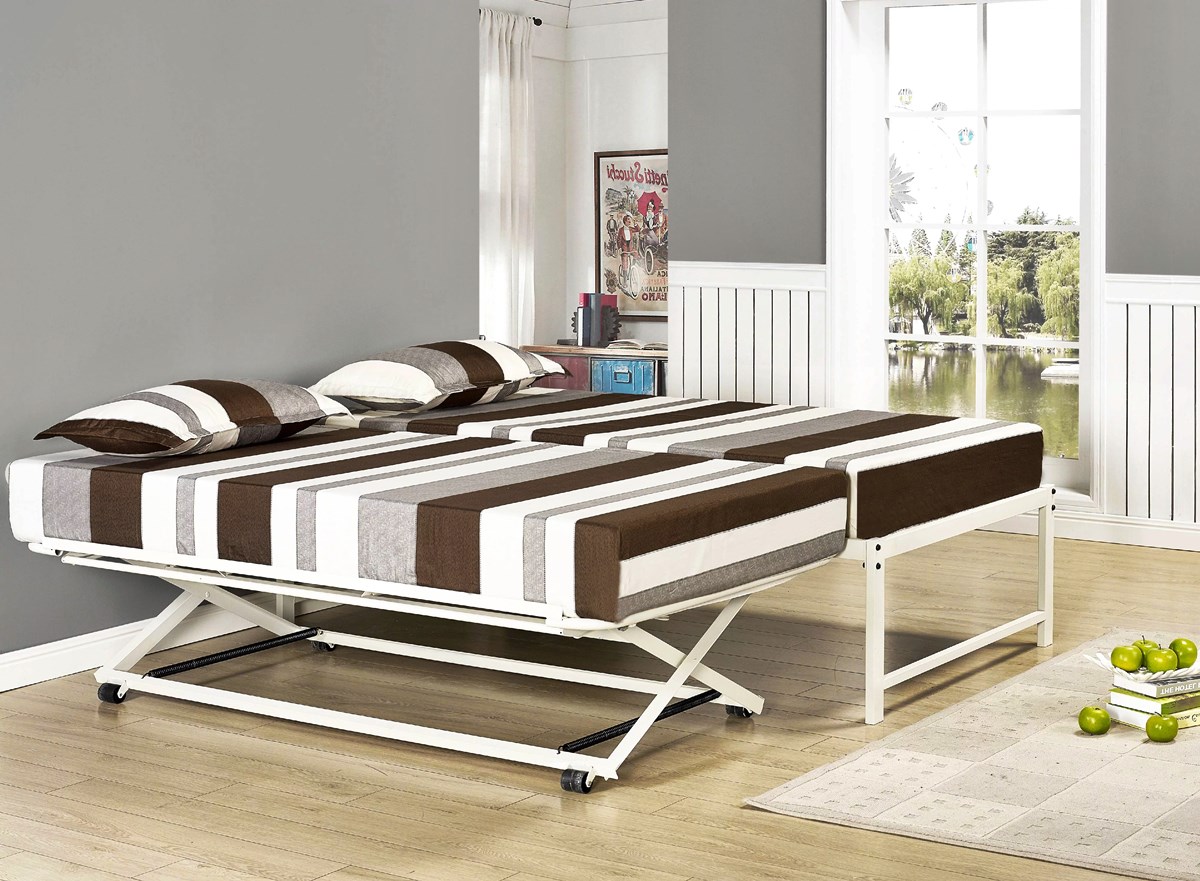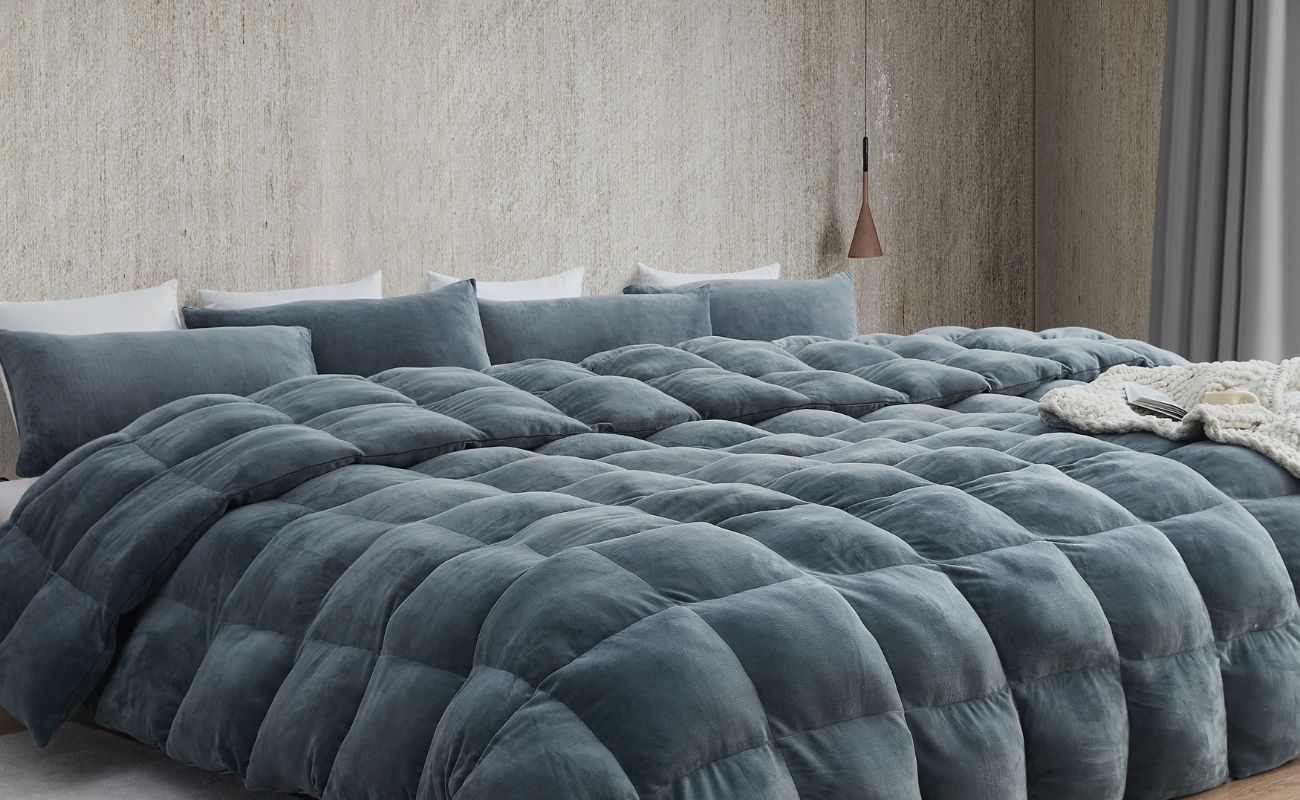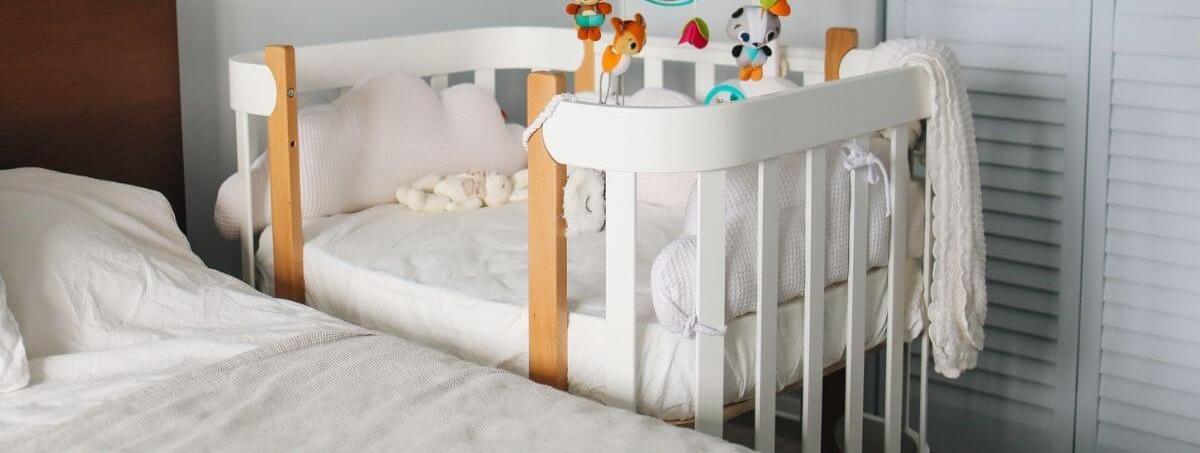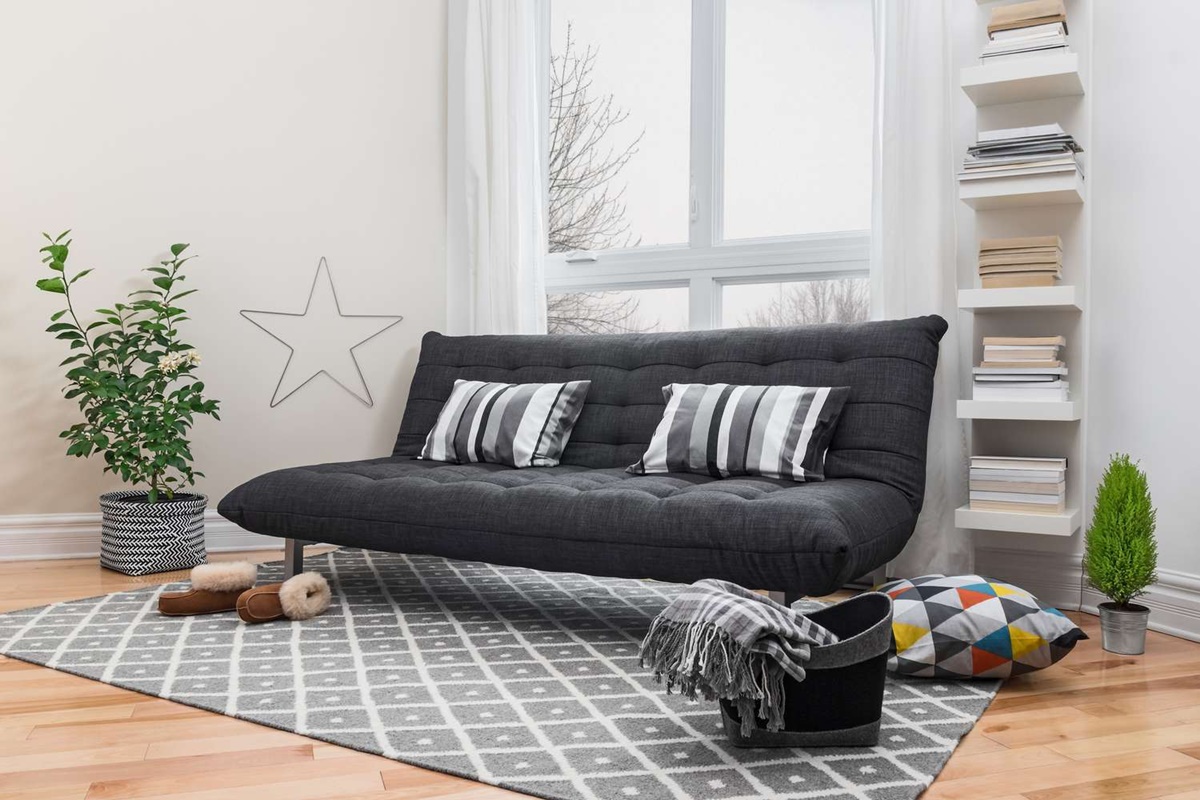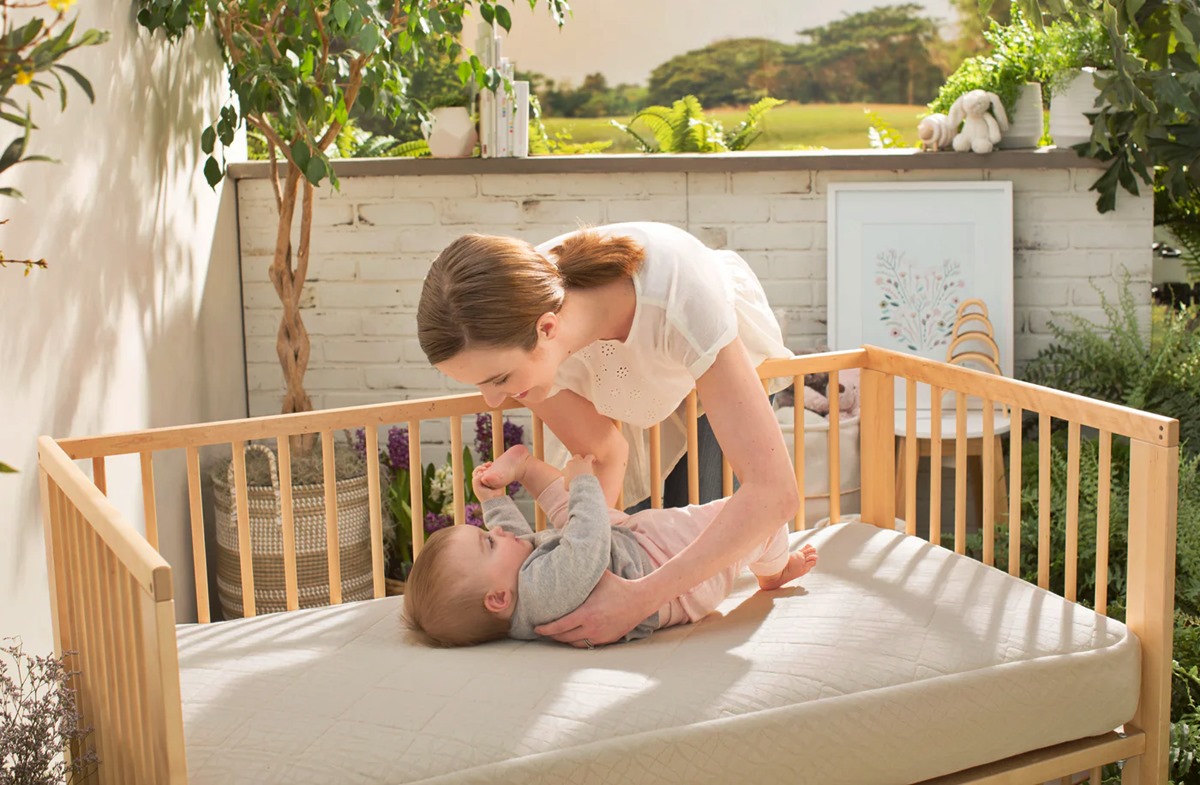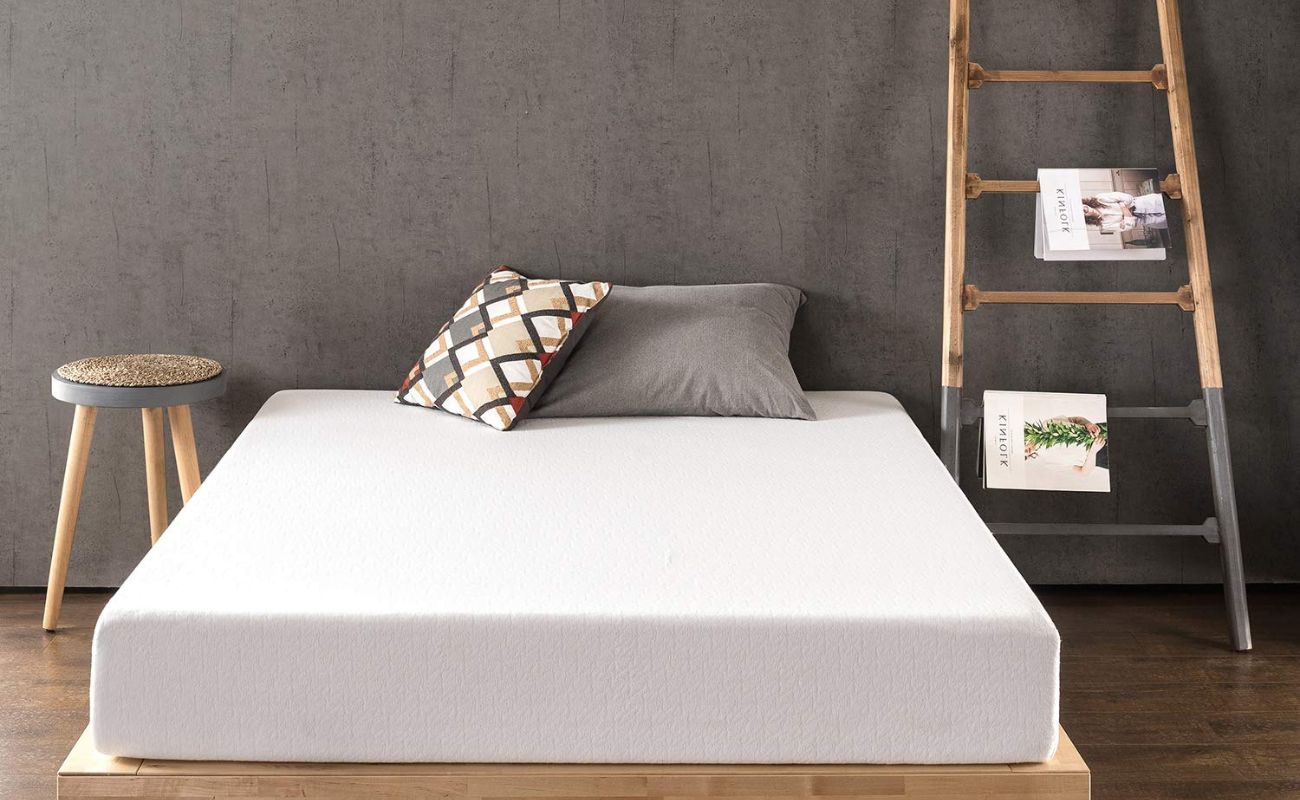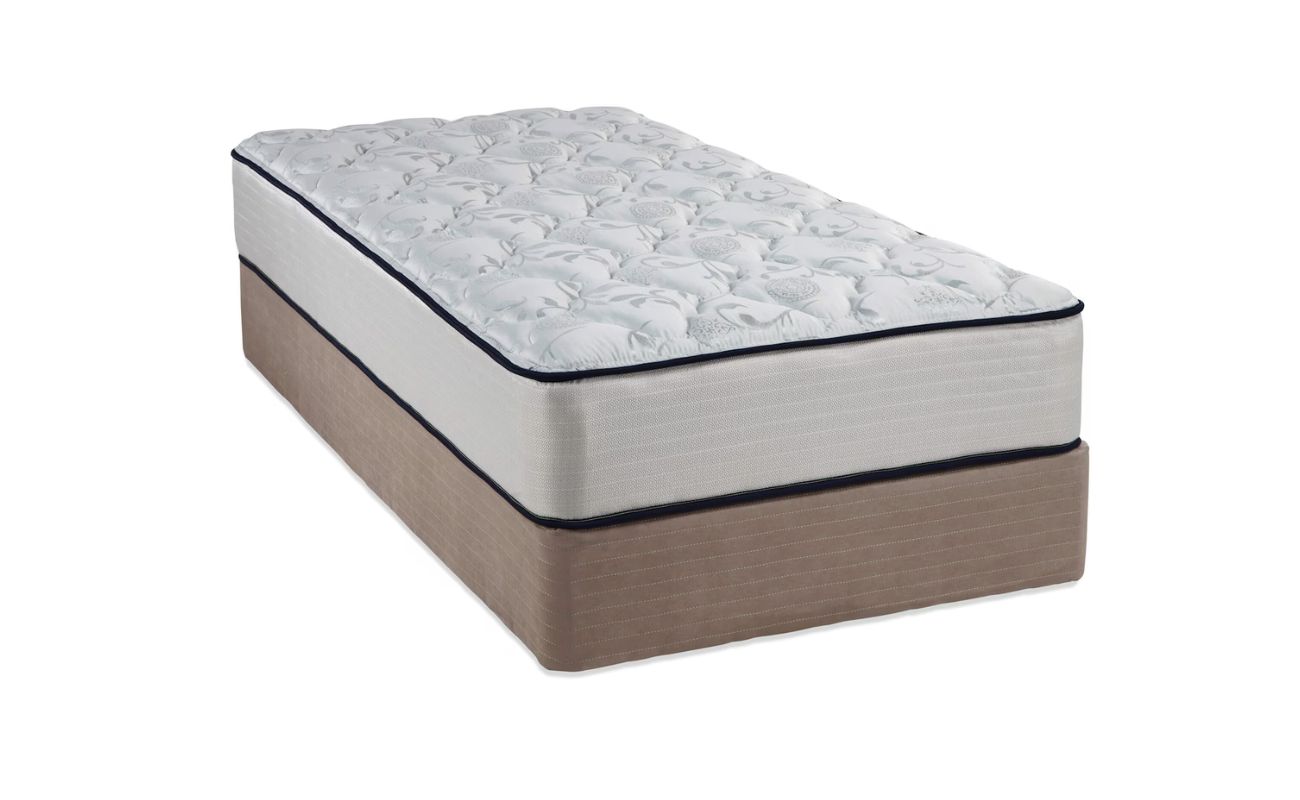Home>Furniture>Bedroom Furniture>What Is The Size Of A Toddler Mattress
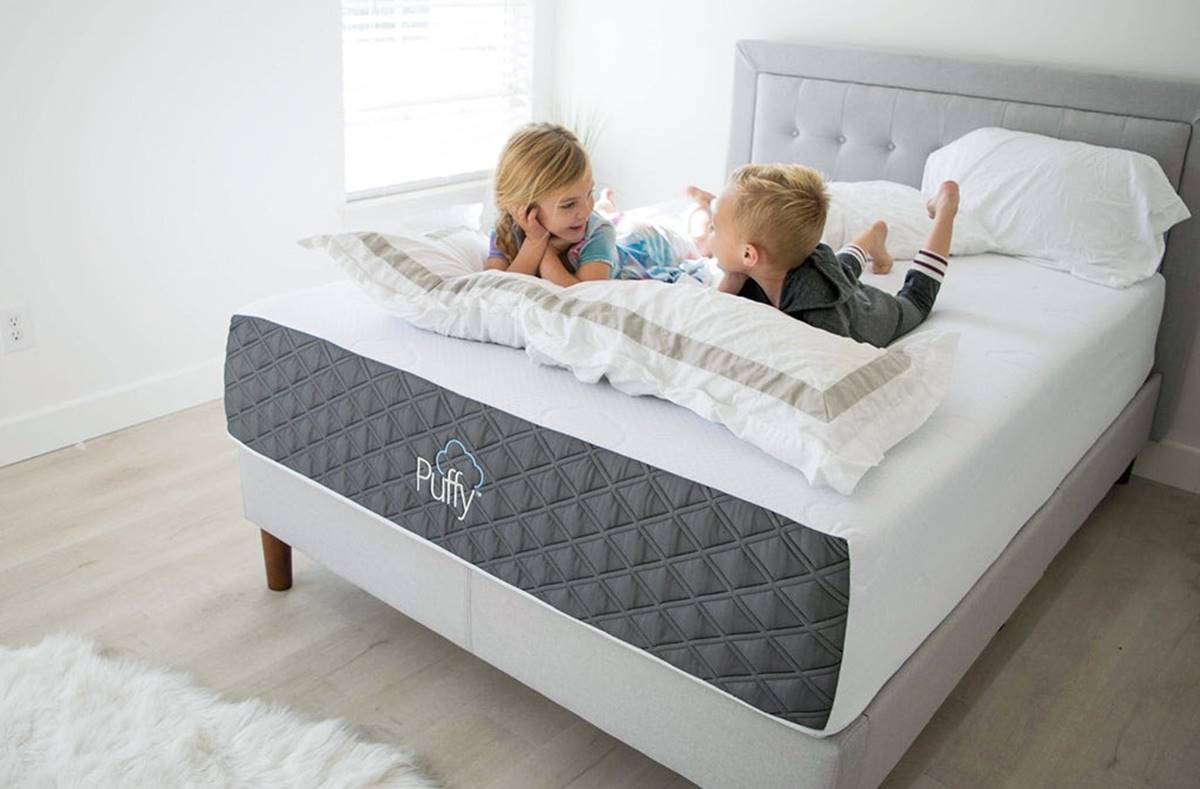

Bedroom Furniture
What Is The Size Of A Toddler Mattress
Modified: March 6, 2024
Discover the perfect size for your toddler's bedroom furniture with our helpful guide. Find out the dimensions of a toddler mattress and create the ideal sleeping space.
(Many of the links in this article redirect to a specific reviewed product. Your purchase of these products through affiliate links helps to generate commission for Storables.com, at no extra cost. Learn more)
Introduction
Choosing the right mattress for your toddler’s bedroom is crucial for their comfort and overall well-being. As your little one transitions from a crib to a toddler bed, it’s important to consider the size and features of the mattress to ensure a comfortable and safe sleeping environment. In this article, we will explore the different sizes of toddler mattresses, compare them to crib mattresses, discuss factors to consider when choosing a toddler mattress, highlight the benefits of using a toddler mattress, provide tips for transitioning from a crib, and offer advice on maintaining a toddler mattress.
Key Takeaways:
- Choose a toddler mattress that fits snugly in the bed frame to ensure comfort and safety for your growing child. Consider factors like size, material, and firmness for a restful sleep environment.
- Transitioning from a crib to a toddler mattress requires patience and a gradual approach. Maintain the mattress with regular cleaning, rotation, and inspections to ensure durability and a hygienic sleep space.
Read more: What Size Is A Toddler Bed Mattress
Standard Toddler Mattress Sizes
When it comes to toddler mattresses, there are a few standard sizes available in the market. The most common size is the toddler bed mattress, which typically measures 28 inches wide and 52 inches long. This size is designed to fit perfectly in a toddler bed frame, providing your child with a comfortable sleeping surface.
There is also a slightly smaller size known as the mini crib mattress, which measures around 24 inches wide and 38 inches long. This size is often used in portable cribs or as an alternative for small rooms.
It is important to note that these standard sizes may vary slightly between different manufacturers. Therefore, when purchasing a toddler mattress, be sure to check the specifications provided by the manufacturer to ensure the perfect fit for your child’s bed.
Additionally, it’s worth mentioning that most toddler mattresses have a thickness ranging from 4 to 6 inches. This thickness is suitable for providing support and comfort for your growing toddler. However, some mattresses may have a higher or lower thickness depending on the brand and material used.
As your child grows, you may also consider upgrading to a twin or full-size mattress. A twin mattress measures approximately 38 inches wide and 75 inches long, while a full-size mattress measures around 54 inches wide and 75 inches long. These sizes provide more room for your child to stretch out and grow.
Overall, when choosing a toddler mattress, it’s important to measure the dimensions of your child’s bed frame and select a mattress that fits snugly. This ensures both comfort and safety during sleep.
Crib Mattresses vs Toddler Mattresses
When it comes to choosing between a crib mattress and a toddler mattress, there are a few key differences to consider. Crib mattresses are specifically designed for use in cribs, while toddler mattresses are designed for the transition from a crib to a toddler bed. Let’s explore some of the main differences between the two:
1. Size: Crib mattresses are usually smaller than toddler mattresses. The standard size for a crib mattress is 27.5 inches wide and 52 inches long, whereas toddler mattresses are slightly wider and longer, generally measuring 28 inches wide and 52 inches long. This difference in size ensures a perfect fit for the respective beds.
2. Support: While both crib mattresses and toddler mattresses provide support, the level of firmness may vary. Crib mattresses are designed to be firm to maintain a safe sleep surface for infants. Toddler mattresses, on the other hand, often have a bit more cushioning and comfort to accommodate the needs of growing toddlers.
3. Age Appropriateness: Crib mattresses are suitable for babies from birth until they are ready to transition to a toddler bed, usually around 2 to 3 years old. Once your child reaches this stage, a toddler mattress is a better option as it provides the necessary support and comfort for their growing body.
4. Weight Limit: Crib mattresses are designed to support the weight of an infant, typically up to 35 pounds. Toddler mattresses, on the other hand, have a higher weight capacity as they are designed to support the weight of a growing toddler who may weigh up to 50-60 pounds.
5. Safety Features: Crib mattresses often come with additional safety features such as waterproof covers and hypoallergenic materials to protect your baby from accidents and allergens. While some toddler mattresses may also offer these features, they may be less focused on waterproofing as toddlers are generally more potty-trained.
When transitioning your child from a crib to a toddler bed, it is recommended to switch to a toddler mattress to ensure their comfort and safety. The slightly larger size, increased cushioning, and higher weight capacity make toddler mattresses more suitable for the needs of a growing toddler.
Remember, the choice between a crib mattress and a toddler mattress ultimately depends on your child’s age, size, and comfort needs. Always consider their specific requirements and consult the manufacturer’s guidelines for the best choice.
Factors to Consider When Choosing a Toddler Mattress
Selecting the right toddler mattress involves considering several factors to ensure your child’s comfort and safety during sleep. Here are some key factors to keep in mind when choosing a toddler mattress:
1. Size: As mentioned earlier, the size of the mattress should match the dimensions of your toddler bed frame. It should fit snugly without any gaps that could pose a safety hazard.
2. Material: Toddler mattresses are typically made from foam, innerspring, or organic materials. Foam mattresses are lightweight and offer good support, while innerspring mattresses provide more bounce and durability. Organic mattresses use natural materials like organic cotton or latex, making them a great choice for families seeking eco-friendly and chemical-free options.
3. Firmness: Toddlers require a firm sleeping surface to support their growing bodies. Look for a mattress that provides sufficient support while still being comfortable for your child.
4. Safety Certifications: Ensure that the mattress meets safety certifications such as CertiPUR-US or Greenguard Gold, which guarantee low emissions of harmful chemicals. These certifications ensure that the mattress is free from toxic substances and provides a healthy sleep environment for your child.
5. Waterproofing: Accidents happen, especially during the potty training phase. Having a mattress with a waterproof cover or a removable, washable mattress protector can make clean-up easier and protect the mattress from stains and odors.
6. Allergies: If your child has allergies or sensitivities, consider a mattress that is hypoallergenic and resistant to dust mites, mold, and mildew.
7. Edge Support: A mattress with good edge support helps prevent your child from rolling off the bed during sleep and provides stability while sitting or playing on the edge.
8. Price: Set a budget for the toddler mattress, keeping in mind that a higher price does not always indicate better quality. Compare different brands and models to find one that offers both quality and affordability.
9. Reviews and Recommendations: Do some research and read reviews from other parents to get insights into the quality, comfort, and durability of different toddler mattresses. Personal recommendations can also help narrow down your options.
Remember, the ideal toddler mattress is one that meets your child’s comfort needs and aligns with your budget and safety considerations. By taking these factors into account, you can make an informed decision and provide your little one with a comfortable and restful sleep environment.
A standard toddler mattress is typically 28 inches wide and 52 inches long, which is the same size as a crib mattress. When purchasing a toddler mattress, be sure to check the specific dimensions to ensure it fits your toddler bed frame.
Benefits of Using a Toddler Mattress
Investing in a quality toddler mattress offers numerous benefits for your child’s comfort and development. Here are some key advantages of using a toddler mattress:
1. Comfortable Sleep: Toddler mattresses are designed to provide the optimal level of support and comfort for growing toddlers. The right amount of firmness and cushioning ensures a comfortable sleep surface, promoting better sleep quality and healthier development.
2. Proper Spinal Alignment: A good toddler mattress helps maintain proper spinal alignment while your child sleeps. It supports the natural curvature of the spine, which is crucial for healthy growth and development.
3. Safety: Toddler mattresses are designed with safety in mind. They fit securely in toddler bed frames, reducing the risk of entrapment or suffocation. The edges are typically rounded or covered to prevent any injuries if your child rolls off the bed.
4. Durability: A high-quality toddler mattress is built to withstand the wear and tear of toddlerhood. It is made with durable materials that can withstand jumping, bouncing, and other toddler activities.
5. Hygiene: Many toddler mattresses come with removable, washable covers or waterproof protectors, making them easy to clean and maintain. This ensures a hygienic sleep environment for your child, free from allergens and dust mites.
6. Growth Support: Toddler mattresses are designed to accommodate the growing needs of your child. They provide the right level of support for their growing bones and muscles, ensuring they wake up refreshed and ready for the day.
7. Smooth Transition: Moving from a crib to a toddler bed can be a significant transition for your child. A dedicated toddler mattress helps make the experience more comfortable and familiar, easing the transition process and promoting better sleep routines.
8. Versatility: Toddler mattresses can be used not only in toddler beds but also in bunk beds, daybeds, or converted cribs. This versatility allows you to extend the life of the mattress as your child grows and their sleeping arrangements change.
9. Improved Sleep Environment: A dedicated toddler mattress offers a clean and tailored sleep surface for your child. By providing a comfortable and safe sleep environment, it helps promote healthy sleep habits and contributes to your child’s overall well-being.
Remember, a good night’s sleep plays a vital role in your child’s growth and development. Investing in a quality toddler mattress can provide them with the necessary comfort and support they need during this crucial stage of their lives.
Read more: What Size Is A Toddler Bed
How to Transition from Crib to Toddler Mattress
Transitioning from a crib to a toddler mattress is an exciting milestone for both you and your child. Here are some steps to help make the transition smooth and successful:
1. Introduce the Idea: Talk to your child about the upcoming transition to a toddler bed. Use positive and encouraging language to build excitement and make them feel involved in the process. You can show them pictures of toddler beds or involve them in choosing the new mattress or bedding.
2. Prepare the Bedroom: Set up the toddler bed in the same room where the crib was located. Keep the room familiar by arranging other furniture or toys in a similar way. This will help create a sense of continuity and ease the transition for your child.
3. Gradual Approach: If your child is hesitant about the transition, consider taking a gradual approach. Start by having them nap in the toddler bed while still sleeping in the crib at night. Once they become more comfortable in the new bed, you can make the full transition.
4. Familiarize with the Bed: Let your child explore the toddler bed during the day. Encourage them to sit, play, or read books on the bed. This will help them become comfortable and associate positive experiences with the new sleeping arrangement.
5. Consistent Bedtime Routine: Maintain a consistent bedtime routine to provide a sense of familiarity and comfort. Follow the same steps you used when your child was in the crib, such as reading a bedtime story or singing a lullaby. This will signal to your child that it’s time for sleep, regardless of the sleeping surface.
6. Safety Precautions: Ensure the toddler bed is set up in a safe manner. Use bed rails if needed to prevent your child from rolling off the bed. Make sure there are no hazards, such as loose bedding or cords, that could pose a risk.
7. Reassure and Comfort: During the transition period, your child may need extra reassurance and comfort. Be patient and offer support if they have difficulty adjusting to the new bed. Consider using familiar bedding or a favorite stuffed animal to provide a sense of familiarity.
8. Monitor and Adjust: Keep a close eye on your child’s sleep patterns and behavior during the transition. If they have trouble staying in bed or experience disrupted sleep, make adjustments as needed. This may include reassessing the comfort or firmness of the mattress or addressing any fears or anxieties they may have.
9. Celebrate the Milestone: Celebrate your child’s successful transition from a crib to a toddler bed. Recognize their efforts and highlight the milestone they have achieved. This positive reinforcement will boost their confidence and make them feel proud of their new sleeping arrangement.
Remember, every child is unique, and the transition from a crib to a toddler bed can take time. Patience, consistency, and supportive guidance will help your child adjust and embrace their new sleeping space.
Tips for Maintaining a Toddler Mattress
Maintaining a clean and well-cared-for toddler mattress is essential for your child’s health and comfort. Here are some tips to help you keep your toddler mattress in optimal condition:
1. Use a Mattress Protector: Invest in a waterproof mattress protector to safeguard the mattress from spills, accidents, and stains. A protector acts as a barrier, preventing liquids from seeping into the mattress and keeping it hygienic.
2. Good Bedding Practices: Choose breathable, hypoallergenic bedding that fits the mattress properly. Avoid using loose bedding or pillows with infants to reduce the risk of suffocation. Regularly wash bedding to keep it clean and free from allergens.
3. Rotate the Mattress: To ensure even wear and prevent sagging, rotate the mattress every three to six months. This will help maintain its shape and prolong its lifespan.
4. Regular Cleaning: Vacuum the mattress regularly to remove dust, dirt, and allergens. Use the upholstery attachment on your vacuum cleaner and pay attention to seams and crevices. Spot clean any spills or stains immediately with a mild detergent and water, following manufacturer’s instructions.
5. Sunlight and Fresh Air: Every few months, take the toddler mattress outdoors on a sunny day. Sunlight helps kill bacteria and freshens the mattress. Let it air out for a few hours to remove any odors.
6. Avoid Jumping on the Bed: Discourage your child from jumping on the mattress, as this can cause premature wear and sagging. Jumping could also lead to accidents and injuries.
7. Check for Wear and Tear: Regularly inspect the mattress for signs of wear, damage, or sagging. If you notice any significant indentations or loss of support, it may be time to consider replacing the mattress for the comfort and safety of your child.
8. Follow Manufacturer’s Instructions: Always follow the care and maintenance guidelines provided by the manufacturer. Each mattress may have specific instructions, including recommended cleaning products or methods to avoid damaging the material.
9. Replace when Necessary: Toddler mattresses are designed to accommodate your child’s growth for several years. However, as your child gets older and heavier, you may need to consider upgrading to a larger mattress that provides adequate support. Generally, it is recommended to replace a toddler mattress every 5 to 7 years, depending on its condition and usage.
By following these tips, you can ensure that your toddler mattress remains clean, comfortable, and supportive for your child. Regular maintenance will help extend its lifespan and provide a healthy sleep environment for your little one.
Conclusion
Choosing the right toddler mattress is essential for your child’s comfort, safety, and healthy development. Considering factors such as size, material, firmness, and safety certifications can help you make an informed decision. Transitioning from a crib to a toddler mattress requires patience and a gradual approach to ensure your child feels comfortable and secure in their new bed. Once your child is settled in their toddler bed, maintaining the mattress through proper cleaning, rotation, and regular inspections will contribute to its durability and longevity.
The benefits of using a toddler mattress are numerous, ranging from providing a comfortable sleeping surface to supporting proper spinal alignment and promoting healthy sleep habits. A toddler mattress offers a dedicated space for your child’s growing needs and ensures a hygienic sleep environment with features like waterproofing and hypoallergenic materials.
By following the tips provided, you can effectively maintain your toddler mattress, keeping it clean and in optimal condition for your child. Regular cleaning, using a mattress protector, and adhering to manufacturer’s care instructions will help prolong its lifespan and ensure your child’s ongoing comfort and well-being.
Remember, the transition from a crib to a toddler bed is an exciting milestone in your child’s life. With the right mattress and proper care, you can provide them with a cozy and safe sleeping environment, setting the stage for restful nights and sweet dreams.
Frequently Asked Questions about What Is The Size Of A Toddler Mattress
Was this page helpful?
At Storables.com, we guarantee accurate and reliable information. Our content, validated by Expert Board Contributors, is crafted following stringent Editorial Policies. We're committed to providing you with well-researched, expert-backed insights for all your informational needs.
